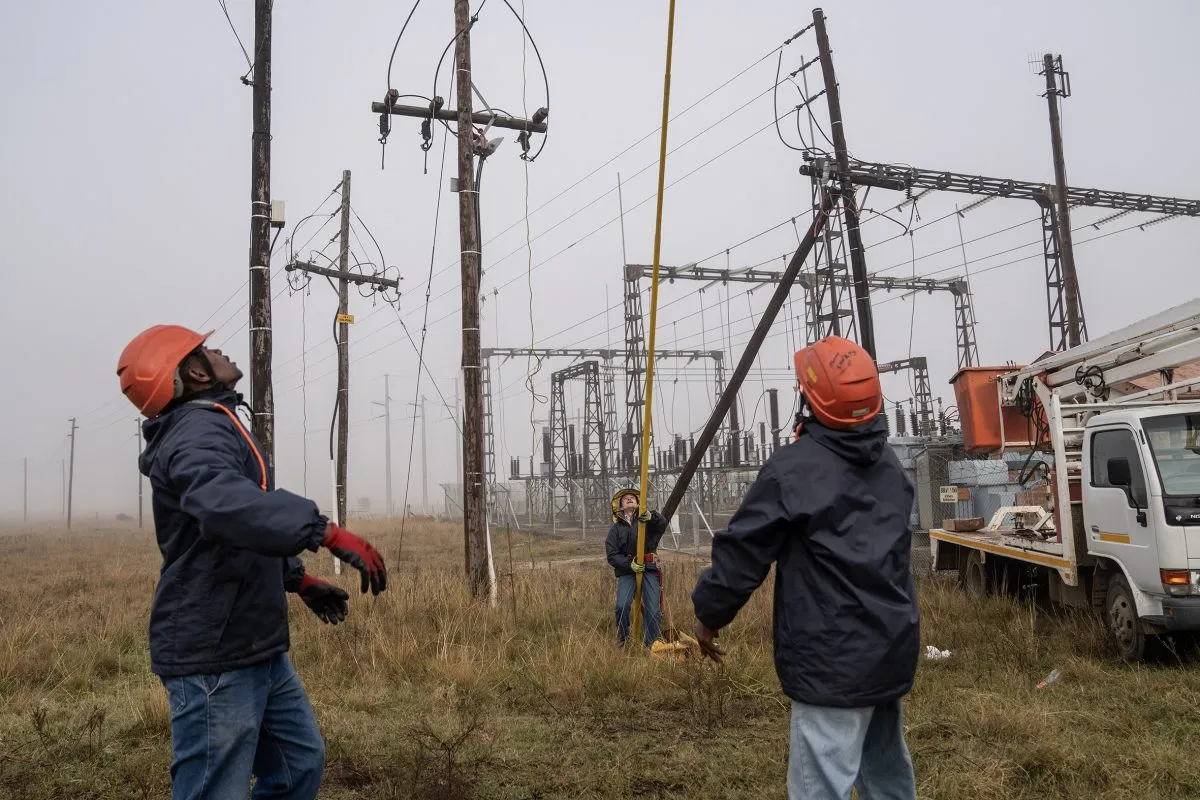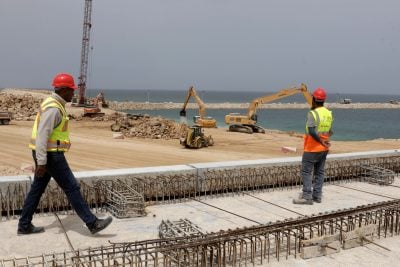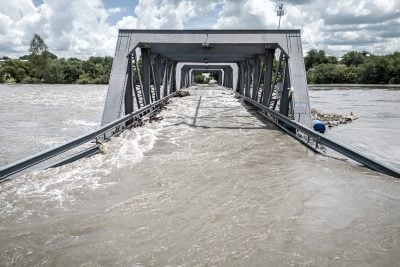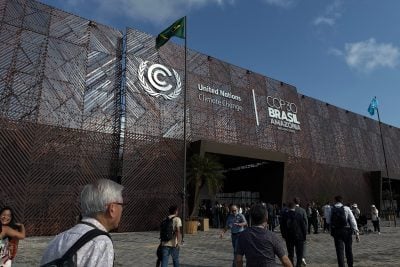African presidents and ministers attending the recent Africa Energy Summit in Tanzania called on the private sector to play an expanded and more consequential role in the continent’s power sector.
The leaders expressed their support for extensive policy reforms aimed at enhancing the sector’s attractiveness to investors and delivering universal energy access, stressing that robust public-private partnerships offer the best chance of achieving the bold goals outlined in Mission 300 (M300).
Backed by the World Bank, the African Development Bank (AfDB), the Rockefeller Foundation and other development partners, M300 is the most ambitious electrification initiative ever rolled out in Africa. It aims to extend affordable, reliable and sustainable electricity to 300m people on the continent by 2030, substantially lowering the energy deficit in a region where an estimated 600m people currently live without electricity.
M300 secured the endorsement of 30 African countries at the summit in Dar es Salaam, 12 of which unveiled their detailed plans, or “energy compacts”, to implement the initiative. The focus now shifts to the initiative’s potential for success. The central question on many minds is whether M300 can succeed where other similarly ambitious initiatives have previously fallen short.
Experts remain cautiously optimistic about M300’s prospects. They argue that its realisation hinges on the success of ongoing efforts to attract private investments and launch the multitude of new energy projects envisioned in the initiative. A pipeline of 130 projects across the continent have already been mapped out.
“For the private sector, this effort represents both a challenge and an opportunity. We need your innovation, efficiency, people, creativity and capacity to scale,” Ajay Banga, World Bank president, said in his address at the gathering, which brought together African heads of state, ministers of finance and energy, international and regional organisations, and private sector players.
“To facilitate your investment, we’ve identified those regulatory policy barriers, we’re working to eliminate them…we will put our money at that point where, if these policy barriers are removed, our money is put to work. This is a pay-for-results effort,” he added.
M300 has so far drawn over $50bn in commitments from development partners. The AfDB and the World Bank plan to allocate $48bn in financing through to 2030 – an allocation which may evolve to fit implementation needs. Other partners to commit to the initiative include Agence Française de Développement (€1bn); the Asian Infrastructure Investment Bank ($1bn to $1.5bn); the Islamic Development Bank Group ($2.65bn) and the OPEC Fund ($1bn).
This financial package, which is deeply concessional, is expected to play a catalytic role in accelerating the pace of power sector reforms across the continent and crowding in new private finance.
Winning over private investors
Africa’s power sector has traditionally been dominated by state-owned utilities that have maintained tight control over all key aspects of electricity generation, transmission and distribution. However, over the past decade, the private sector has steadily made inroads into the sector as more governments recognise the benefits of joining forces with private entities to leverage their expertise and capital.
This shift is particularly apparent in electricity generation, where independent power producers (IPPs) have become an important source of new investment in the power sector in many African countries. Nigeria stands out as a leading example, with data from the Nigerian Electricity Regulatory Commission (NERC) showing that in 2022, IPPs accounted for 31.2% of the country’s total generation capacity.
“There was a time when people were saying generation should be done by the public sector because it’s a strategic sector. We have turned the corner and today a big chunk of the production of electricity is done by the private sector,” said Makhtar Diop, managing director of the International Finance Corporation (IFC), the World Bank’s private sector investment arm.
“Nigeria and other countries have shown that generation is now mainly done by the private sector,” he noted at a panel during the summit.
Diop said that the time was ripe for the private sector to expand its focus beyond power generation and make new investments in transmission and distribution projects.
“A lot of the distribution companies are undercapitalised, are not in a good financial situation, and are therefore not able to invest in operations and maintenance, which is so important,” he stated.
He blamed the chronic underinvestment in distribution networks for the notably higher number of power outages that many African countries face compared with other regions. “A lot of the power outages you have in Africa are not linked to production. They are often linked to distribution.”
Speaking on the same panel, Hussain Al Nowais, chairman of UAE energy firm AMEA Power, echoed Diop’s sentiments.
“It is time for developers to start investing in the distribution network. Production is easy, but how do you evacuate that production? How can it be done with a weak network?” he questioned.
Al Nowais praised countries such as Morocco and Egypt for significant investments in their power grids but acknowledged that the majority of African nations needed to invest “much more” in their transmission and distribution networks. He urged African leaders to intensify efforts to “open up” the grid to the private sector.
Tackling financing risks
Private sector leaders who addressed the summit indicated they are keen to invest more aggressively in Africa’s power sector. However, several key risks are hindering them from investing at the scale they would like. A major concern that the majority of them highlighted is the forbiddingly high cost of capital on the continent, which renders capital-intensive power projects unviable even before developers can break ground.
William Asiko, vice president for Africa at the Rockefeller Foundation, notes that the high cost of capital on the continent stems from structural issues in public balance sheets that may take some time to resolve.
“We have to understand why the cost of capital fluctuates so much in emerging markets. A lot of emerging markets are in situations where they have high debts. Their debt-to-GDP ratios are quite high and therefore that generally attracts a high cost of capital for the countries themselves to borrow,” he told African Business.
“This means that if a private sector investor is investing in that country, they also attract a high cost of capital generally because of the situation the country finds itself in,” he said.
However, Asiko suggests that there is a workaround to the high cost of capital. He advocates blended finance models, in which countries combine public and private funds with philanthropic capital to help mitigate some of the risks that inhibit the flow of private finance to the power sector.
“Philanthropic capital can be a big help in terms of taking a first loss position, taking risks that perhaps commercial banks may not take, and also going into sectors that commercial banks may not go into,” he explained.
He cited the example of the work the Rockefeller Foundation is doing to finance crucial studies in Africa’s power sector, including feasibility, environmental, and impact assessments.
“These are really important to these big generation projects, but private commercial capital will generally not pay for them. So I think that’s the role that philanthropic capital can play,” he said.
“There are a number of things that commercial capital will not pay for, and there are a number of things that, for the government to work on, will take an extraordinarily long time. So this is where philanthropic capital comes in. We can do things quickly and we can be very targeted in our interventions.”
Another major risk impeding the flow of private finance into Africa’s power sector is the fact that most of the financing for energy projects is done in foreign hard currencies such as the dollar or the euro. This model often proves financially unsustainable, as energy services are paid for by local populations in local currencies but corporate debts are repaid in foreign currencies. This leads to a currency mismatch that exposes investors to currency convertibility risks and volatile exchange rate fluctuations.
Asiko noted that the Foundation is addressing this risk through innovative finance.
“Some of the funding we are providing is aimed at creating models that allow these investors to access [capital in] foreign currency but pay back their debt in local currency,” he said.
“Philanthropic capital can come in and take on the exchange currency risk, so the private sector doesn’t have to face the high charge associated with foreign currency.”
Political will is crucial
Some of the reforms required to achieve M300 will be painful and demand significant political will to successfully implement. One critical reform that will particularly test the mettle of political leaders is the call to reduce and finally eliminate power sector subsidies. Experts say this will ensure that power tariffs reflect the true cost of capital, a move that will help investors make informed decisions. However, history suggests that if citizens’ power bills rise too fast, leaders could face significant political backlash over the cost of living and doing business.
“Because access to power has always been a public good, many countries have subsidised the cost of that power to their citizens, so the tariffs that their citizens pay does not reflect the true cost of capital. That’s something that countries are going to have to work on,” Asiko said.
“If you want the private sector to invest, you have to be more transparent about your tariffs, so that they can reflect the true cost of capital, and the private sector can determine whether they want to put resources in it or not,” he added.
Streamlining processes in regulatory agencies to make the process of complying with local laws and regulations more transparent, predictable, and efficient will similarly require significant political will. This is a critical area where energy investors often express concerns about high levels of political interference, which they say impedes service delivery and sustains conditions conducive to rent-seeking.
“Another challenge is permits and dealing with different local organisations. One of the suggestions I’ve made is to have a one-stop-shop where we, as developers, can handle all the required permits,” said Al Nowais. “This way the investor doesn’t waste time running around.”
AMEA Power, which is active in 20 African countries, currently produces 600 megawatts on the continent. Al Nowais highlighted that the firm has experienced the benefits of seamless regulatory processes in some markets, which has enabled it to implement major projects in these countries within the timelines it originally set out to.
“We’ve seen this, for example, in Togo, where they have done remarkably well. You go to the one-stop shop, all the issues are solved, and you move on,” he said.
Boost for renewables and clean cooking
In terms of the new projects that will be pursued under M300, one of the major areas of focus for countries will be distributed renewable energy (DRE). This refers to small-scale energy systems that generate and distribute power close to the point of consumption, rather than relying on large, centralised power plants. These systems, often using renewable energy sources like solar panels, can provide electricity to remote and underserved areas where extending the main grid is impractical or too costly.
The International Finance Corporation (IFC) announced at the summit the establishment of a new $1bn fund to invest in private companies working on DRE projects and off-grid solar solutions in Africa. Additionally, the African Guarantee Fund (AGF) launched its Mission 300 Local Currency Guarantee Facility, an initiative to mobilise $5bn to support energy access projects across Africa. This facility targets local currency financing for small and medium-sized enterprises (SMEs) in the DRE sector.
Another major focus for countries will be accelerating the shift to clean cooking technologies, such as liquefied petroleum gas (LPG) stoves. These technologies are expected to mitigate both environmental and public health concerns by eliminating the use of firewood and charcoal for cooking. These traditional energy sources not only contribute to deforestation but also pose serious health risks, particularly for women and girls who are most adversely affected by the toxic fumes produced when cooking over open fires fuelled by charcoal.
Patrick Pouyanné, CEO of TotalEnergies, argued that Africa’s abundant natural gas reserves could accelerate both the adoption of clean cooking and the continent’s energy transition.
“If you need reliable electricity 24/7, without intermittency, you have to combine it with gas. You need to advocate for this in every international forum. Gas will enable progress, drive Africa’s development, and support both economic and social growth,” Pouyanné told delegates during a panel.
“Liquefied petroleum gas is available in Africa for clean cooking. It is an affordable and clean energy source. We committed the company to invest $400m to reach 85 million Africans with LPGs,” he said.
“This is a very pragmatic way to bring this reliable and clean energy,” he added, noting that the company was exploring the use of affordable pay-as-you-use digital tools to encourage uptake without requiring customers to pay upfront for the full bottle of LPG.
Want to continue reading? Subscribe today.
You've read all your free articles for this month! Subscribe now to enjoy full access to our content.
Digital Monthly
£8.00 / month
Receive full unlimited access to our articles, opinions, podcasts and more.
Digital Yearly
£70.00 / year
Our best value offer - save £26 and gain access to all of our digital content for an entire year!
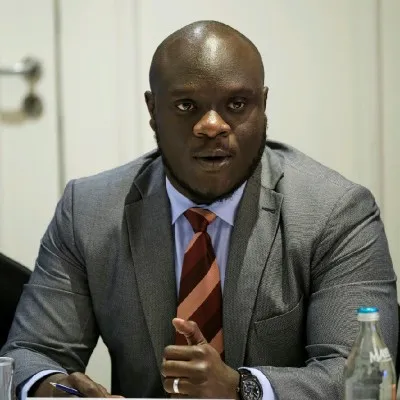
 Sign in with Google
Sign in with Google 